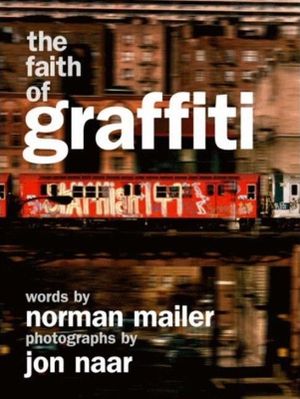January 17, 2020
The Faith of Graffiti Notes
Mailer links graffiti with his conception of the hip that he developed in his seminal essay The White Negro. For Mailer, the Hipster is one that challenges the status quo, often in violent, unpredictable, and creative ways. The Hipster is a subversive figuration—not morally good, but necessary to challenge authoritarian views that could lead to greater, state-sanctioned atrocities, like the holocaust.
1. “Life is an image”
Mailer, as the A-I, accepts the assignment to write about graffiti, interviews several retired graffiti artists, and discovers the importance of the name.
- Rather than take on the “chore” of journalism, NM assumes the persona of the “Aesthetic Investigator” (A-I)[1]
- Graffiti artists, like CAY 161, see themselves in the lineage of the great chapel painters of the Renaissance[2]
- Something spiritual about it: CAY 161 “has the power of his own belief.”
- “Life is an image”[3]
- The artist taps into something spiritual—tempting (or pleasing?) the gods[4]
- “The name is the faith of graffiti”[5]
- This refers to NM’s essay (cf, ¶s 6–8), and something more profound
- the name is a “hit,” linking graffiti to death[6]
- Poverty and crime are integral to the process?[9]
- friendship, too?[10]
2. “Commit an artistic act”
The A-I describes the “existential stations of the criminal act”: the process of “inventing” the paint, clandestine travel, the fear that accompanies the act, and the verdant “profusion and harmony” that combatted the “high-rise horrors” with “wavelets of ego.” Now, the authorities have cracked-down on graffiti, and it seems as if the “impulse to cover the walled tombs of technology had been broken.”
- “There was always art in a criminal act.”[11]
- Graffiti artists lived through the crime to “commit an artistic act”
- Art itself, NM suggests, is a subversive act
- “Collective therapy of grace exhibited under pressure”[12]
- combats the “assault on the psyche” of modern life[13]
- Graffiti is described as a jungle to “save the sensuous flesh”[14] from the homogeny of modern life
- “Comic strips come to life”[15]
- subway cars and metal were “their natural canvas”[16]
- suggests that this was the best place to cause the most challenge and provide the most fame for the graffiti artist
Citations
- ↑ Mailer 1978, p. 134.
- ↑ Mailer 1978, ¶2.
- ↑ Mailer 1978, End of ¶2.
- ↑ Mailer 1978, ¶22, p. 140.
- ↑ Mailer 1978, ¶19, p. 139.
- ↑ Mailer 1978, p. 136.
- ↑ Mailer 1978, ¶9.
- ↑ Mailer 1978, ¶23, p. 138.
- ↑ Mailer 1978, pp. 136–37.
- ↑ Mailer 1978, ¶12, p. 138.
- ↑ Mailer 1978, p. 141.
- ↑ Mailer 1978, p. 144.
- ↑ Mailer 1978, ¶30, pp. 143–44.
- ↑ Mailer 1978, ¶24, p. 143.
- ↑ Mailer 1978, ¶30, p. 143.
- ↑ Mailer 1978, ¶25, p. 141.
Works Cited
- Mailer, Norman (1978) [1974]. "The Faith of Graffiti". Pieces and Pontifications. Boston: Little, Brown. pp. 134–158.
Bibliography
- Austin, Joe (2001). Taking the Train. New York: Columbia University Press.
- Cooper, Martha; Chalfant, Henry (1984). Subway Art. New York: Holt, Rinehart and Winston.
- Kohl, Herbert (1972). Golden Boy As Anthony Cool. New York: Dial Press.
- Mailer, Norman (1992) [1959]. "The White Negro". Advertisements for Myself. Cambridge: Harvard UP.
